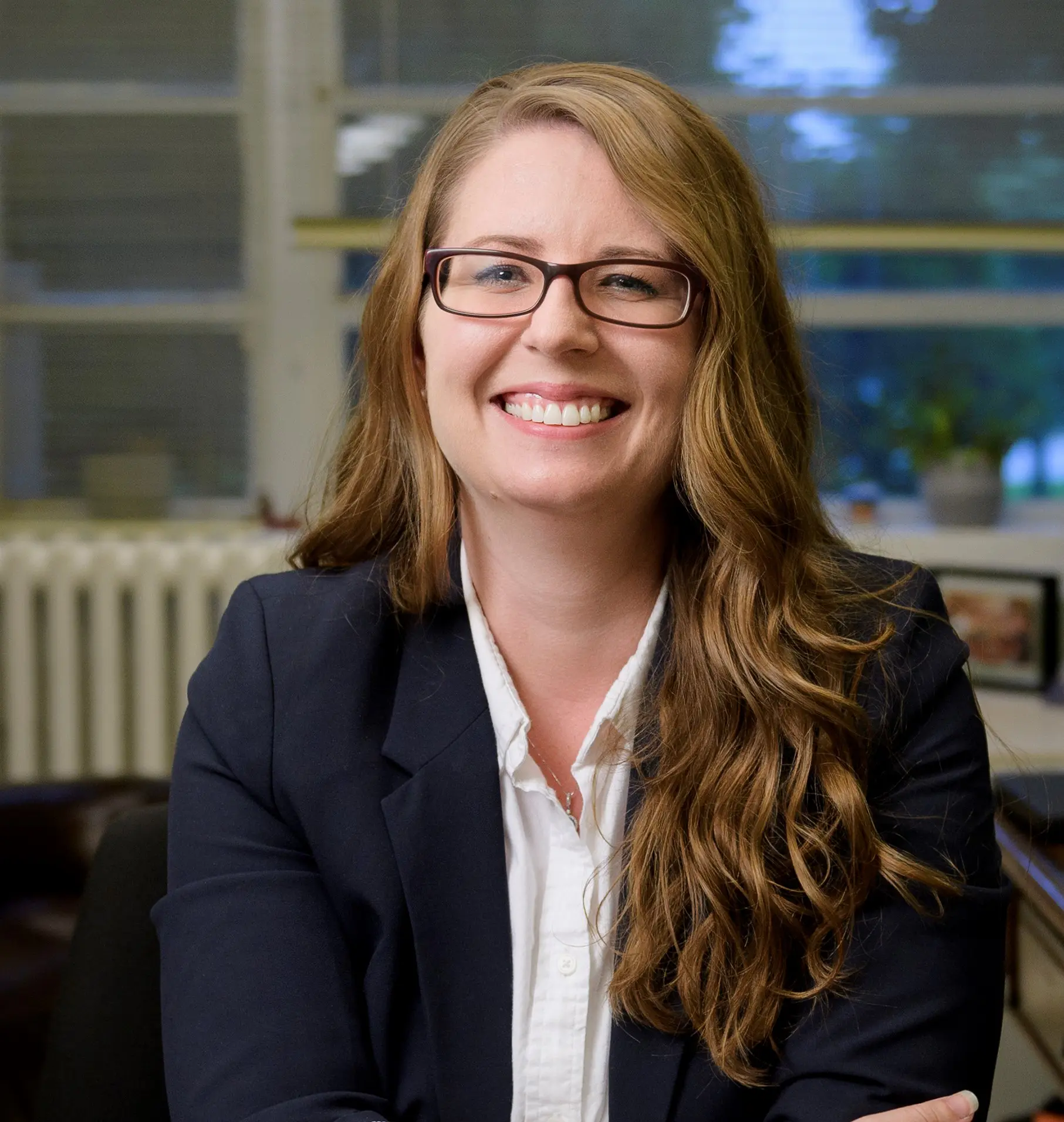Purdue Public Health research lab explores digital options for children seeking help from domestic violence

Laura Schwab Reese
Written by: Tim Brouk, tbrouk@purdue.edu
Twin sisters Amelia and Anneliese Williams, both juniors studying in the Purdue University Department of Public Health, found a research home Assistant Professor Laura Schwab Reese’s lab. They also found a research passion in combating domestic violence in the home.
Schwab Reese’s overall work looks at violence in society. However, her most recent projects examine domestic violence and intimate partner violence. Although often used interchangeably, the latter is defined as any violence between current or former intimate partners. Domestic violence includes any violence that occurs within the home. Much of the work focuses on the maltreatment of children wrapped up in domestic violence.
The Williams sisters grew up with elements of violence in their home. Their research has become a life calling.
“For me, this is my wheelhouse. This is what I want to do with my career. It comes back to, for me, personal experience,” Amelia Williams said. “That drives and motivates me to know that these kids need help. I know some of the details of the systems they face quite intimately, and that’s important to me that kids in the future don’t have to go through the same experiences that I had to go through as a child.”
The sisters, as well as other student researchers in Schwab Reese’s lab, focus their work on young people — children and young mothers — and how they reach out for help. The work revealed young victims or witnesses to domestic violence are more willing to use online platforms, such as social media, text or chat hotlines, or mobile apps, as opposed to phone lines or dialing 911 for the police.
While ages range from small children to young adults, most of the data the Williams sisters are using for their project involve teenagers reaching out for help over mobile devices or laptops. Resources such as Love Is Respect and TalkLife communicate over text message or chat features. TalkLife is available in app form too.
The Williamses executed a qualitative content analysis on TalkLife for child maltreatment. Analyzing digital posts and message boards on the platform that functions like a social media channel, they looked for themes and patterns of what the children were saying about the domestic abuse they were experiencing and what kind of responses the young people received from other TalkLife users. The Williamses found young people reaching out for help seemed comfortable sharing details about their home lives. They discussed emotions and their mental health with other young people online.
“A really important thing to understand is that young people tend to disclose to each other much more often than they disclose to adults,” Amelia Williams explained. “Our work is showing kids on social media are responding to each other in relatively positive ways that build support. They’ll emotionally support each other with ‘You’re not alone,’ ‘I’m here with you,’ ‘You can get through this.’”
Childhelp
Amelia Williams is also combing through 166 transcripts from Childhelp. Schwab Reese has collaborated for several years with the nonprofit organization dedicated to prevention and treatment of child abuse for research. Along with senior Ben Westney, a 4+1 student in health sciences and public health, the researchers analyzed the exchanges to understand how children describe their interactions with public systems, such as law enforcement and child protective services. The College of Health and Human Sciences researchers were seeking to understand what brings children to the hotline after seeking help from local resources.
“What I’ve seen so far is they (children who do not receive help from local systems) don’t know how to proceed, generally. The kids are reaching back out to the hotline to figure out what they can do,” said Westney, adding some children reach out several times to Childhelp, suggesting the local responses were inadequate.
Another negative trend spotted were follow-up sessions after the responder suggested calling child protective services (CPS). Often, reporting to CPS only brought wrath from the parent or only temporary change. The child was returned to the home, and the same violence was reported.
‘I can see little me’
Schwab Reese said she wants these students to work in “an action lab.”
“How do we take the knowledge we’ve created and do something about it?” Schwab Reese asked. “We’re not just documenting that people are having a hard time interacting with systems or that help with maltreatment doesn’t go very well. What do we do about that? How do we help adults have these conversations better? How do we help systems engage with children better?”
A recent action example is Project Swaddle, recently established in Montgomery County, Indiana. The program specially trained paramedics to work with young expectant mothers who may suffer from food and housing insecurity and are at risk for domestic violence.
“How do we help mom and baby have a good start to life? Part of that is not having violence in the home,” said Schwab Reese, adding hundreds of women have gained assistance from the program described in a recent BMC Health Services Research paper.
For the Williams sisters, the work is therapeutic. They want to help kids who dealt with home issues like they did.
“I think the work Dr. Schwab Reese does focuses on making real change,” Anneliese Williams said. “This is where I can see little me and wanting to give her the resources. I can’t change that for myself, but we can very much make a difference for other people. That makes it all worth it to do this research.”
Discover more from News | College of Health and Human Sciences
Subscribe to get the latest posts to your email.